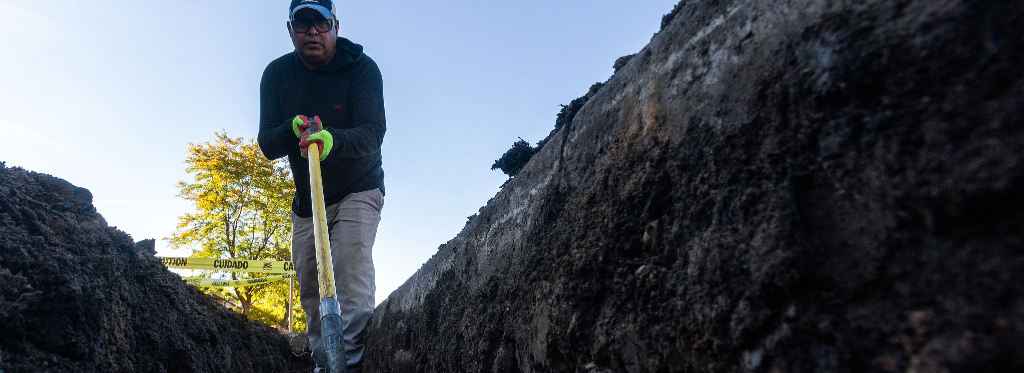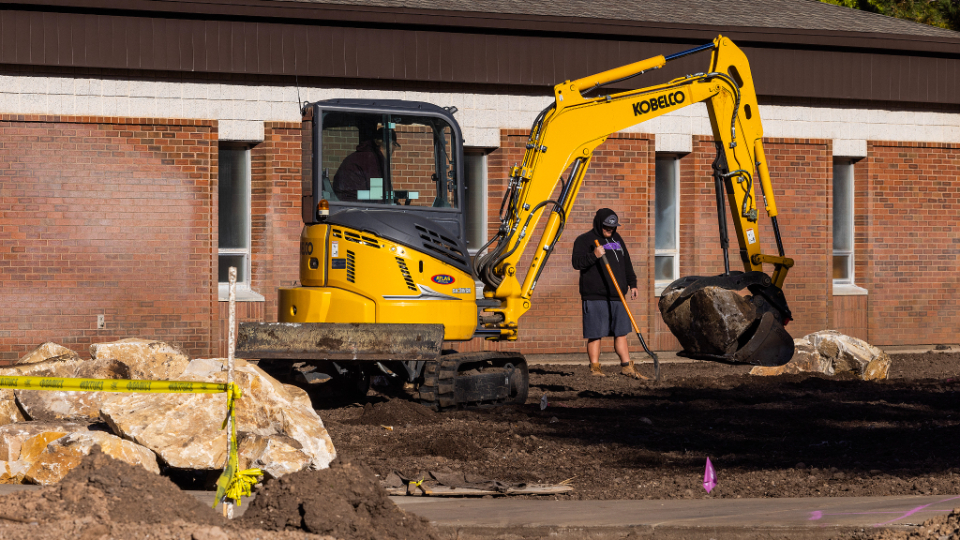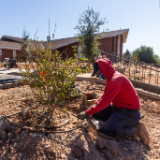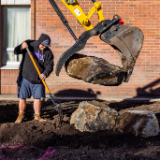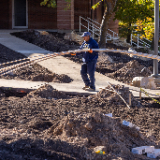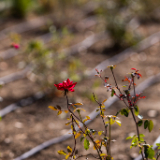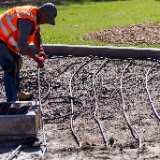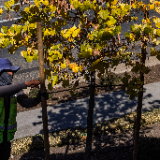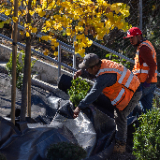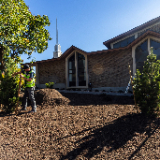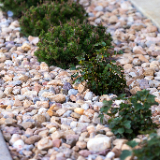The Church of Jesus Christ of Latter-day Saints has moved forward on water conservation plans announced earlier this year by Bishop W. Christopher Waddell at the Wallace Stegner Symposium at the University of Utah.
Six meetinghouses in Utah, the second driest state in the U.S., have had landscape makeovers. The goal is to significantly decrease water usage through reducing lawn, improving irrigation systems, and adding drought-tolerant, waterwise and native plants around select houses of worship in Castle Dale, Clearfield, Ogden, Salt Lake City and St. George. Another makeover is in the works at a meetinghouse in Lehi.
| Temple Square is always beautiful in the springtime. Gardeners work to prepare the ground for General Conference. 2012 Intellectual Reserve, Inc. All rights reserved. | 1 / 14 |
At a conference in Brazil in October, Bishop Caussé listed water conservation through waterwise landscaping as one of the Church’s six major sustainability priorities.
“Water conservation in this state is a critical issue for all of us. And it’s certainly something the Church is concerned about,” said Church Sustainability Manager Jenica Sedgwick. “It’s an important part of our broader sustainability efforts, especially with concerns regarding the water levels of the Great Salt Lake.”
After about two years of review, this research and development effort will illuminate useful data to help inform future endeavors.
“We have more projects coming, so we’ll be continually learning as we study which water conservation and sustainable landscape practices are most effective, the cost of those, and what’s possible,” Sedgwick said. “The outcomes of these pilots, along with other ongoing projects, will inform what we do in the future.”
As part of the project’s holistic approach, consideration is being given to enhanced aesthetics, improved habitat for pollinators, a reduced heat island effect and better building accessibility through added walkways.
At a meetinghouse in Ogden, for example, landscapers are creating decorative dry-set walls to connect the grounds to the beautiful mountainous surroundings.
“This pilot program gives us the opportunity to do something that’s new, different,” said Jim Puffer, one of the Church’s landscape contractors. “It’s going to save a lot of water. It’s going to save a lot of maintenance. The landscapes are just super clean. I’m hopeful that maybe (my own Church) building, as well as others in the area, can be re-landscaped this same way so that it just brings a lot more pride to our neighborhoods and to our community.”
Tommy Carter, another landscape contractor, is working on the meetinghouse landscaping in central Utah’s Castle Dale.
“I appreciate what the Church is trying to do because we’re here to take care of what God has given us,” Carter said. “The Church is basically trying to set that example. It isn’t cheap to do this. The Church is spending money, but they’re trying to do it efficiently and effectively to take care of the earth and take care of tithing money and take care of water.”
Typically, lawns at new meetinghouses in Utah comprise no more than 35% of the landscape area; the remainder is covered with mulch, plants, and trees. Looking beyond Utah, the current practice Churchwide is to create a waterwise landscape relevant to the water availability in those regions. In places such as Southern Nevada, lawn is being removed completely.
Finding a balance between conservation, beauty and neighborhood fit is part of the challenge of a new approach.
“We’re trying to find that sweet spot,” said David Wright, a landscape architect with the Church’s Meetinghouse Facilities Department. “How can we be conservation-minded and still have a nice, attractive building that’s complementary to the neighborhood? Ultimately, we would like to fit within the neighborhood and not be too over-the-top where we’re shocking the neighbors. We want to do something that’s acceptable.”
Over the years, the Presiding Bishopric of the Church of Jesus Christ has made concerted efforts to align the faith’s sustainability practices more closely with its doctrine of earthly stewardship. That means caring for the earth, being wise stewards over it and preserving it for future generations. In this case, Church leaders and staff are seeking greater understanding of the best choices to landscape its buildings — especially those in arid climates.
In the past year, each member of the Presiding Bishopric has spoken about the importance of environmental stewardship for both the Church at large and everyday Latter-day Saints.
“When it comes to taking care of the earth, we cannot afford to think only of today,” Bishop L. Todd Budge, Second Counselor, said at Utah Valley University in October 2022. “The consequences of our actions, for better or worse, accumulate into the future and are sometimes felt only generations later. Stewardship requires feet and hands at work in the present with a gaze fixed on the future.”
At a gathering at the University of Utah in March 2023, Bishop W. Christopher Waddell, First Counselor, said that though the Church’s efforts have not been perfect, “there is a continual and ongoing Churchwide effort to improve our care of natural resources, including the implementation of best practices and available technology to improve our water efficiency.”
At the Church’s October 2022 general conference, Bishop Caussé taught Latter-day Saints that “care of the earth and of our natural environment is a sacred responsibility entrusted to us by God, which should fill us with a deep sense of duty and humility. It is also an integral component of our discipleship.”
“At the end of this mortal existence,” Bishop Caussé concluded, “the Master will ask us to give an account for our sacred stewardship, including how we have cared for His creations.”
